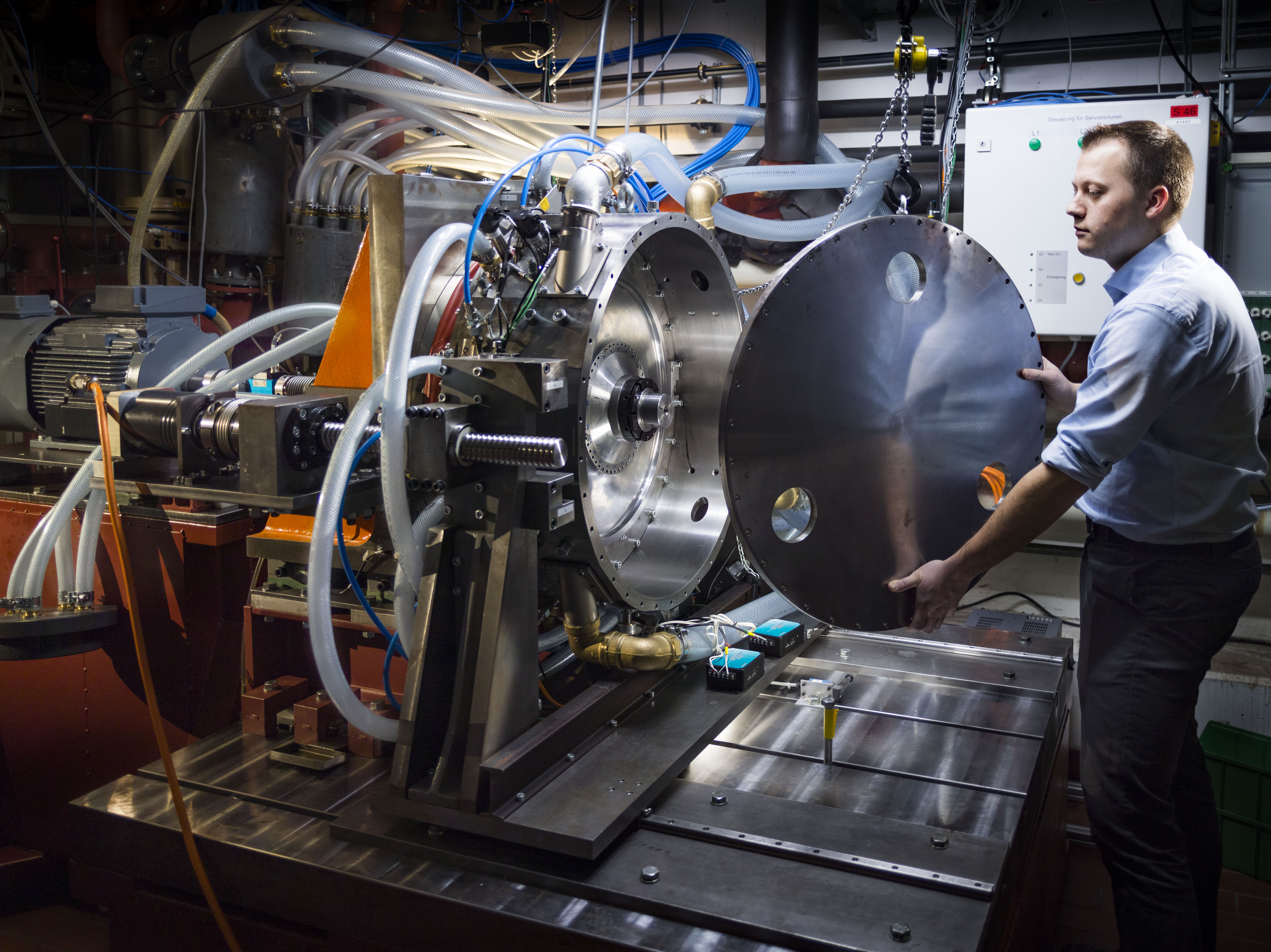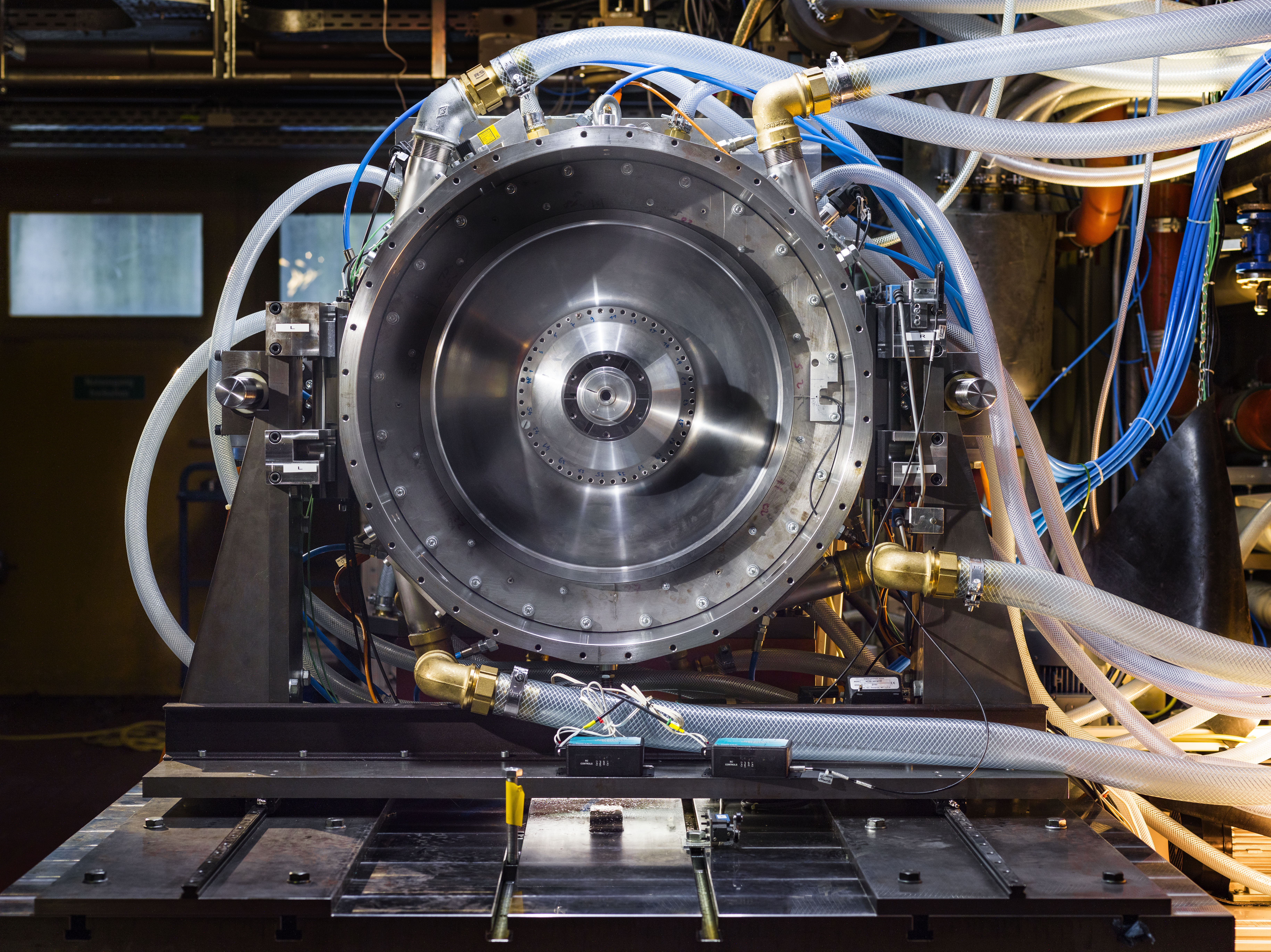Description
The test rig for adaptive seals at the Institute of Thermal Fluid Machinery was set up as part of a research project in 2015. The modular design makes it possible to investigate a wide range of different future-oriented sealing technologies as scaled overall models. The expertise ranges from static labyrinth seals to dynamic adaptive seals (radial and axial) and the determination of their characteristic operating behavior. To this end, the seal leakage and the operating gap width are recorded with high precision and frequency in order to be able to resolve dynamic effects. With the variable pre-twist system, the supply air can be twisted at a tangential speed of up to 100 m/s. Upstream pressures of up to 10 bar and speeds of up to 10,000 1/min can be realized [1].

Possibilities
- Investigation of future-oriented static and dynamic sealing concepts
- Leakage mass flows up to 700 g/s
- Variable inflow conditions with twisted flow
- Upstream pressures up to 10 bar / back pressure up to 4 bar
- Movable housing to simulate relative movements between rotor and stator: Axial travel (+/- 10 mm) / Radial travel (+/- 3 mm)
- Speeds up to 10 000 1/min
Measuring technology & control
- State-of-the-art measuring methods for high-precision determination of the sealing gap (laser, optical and capacitive) and the housing position relative to the rotor
- Pressure transducer for recording and controlling the pressure boundary conditions
- Continuous recording of the mass flow from 3 - 700 g/s with a controlled measuring orifice section
- Speed and torque monitoring
- High-frequency and high-precision data acquisition with NI CompactDAQ systems
- Test stand control with NI LabVIEW and Beckhoff PLC
Source:
[1] Beermann, L. S., Höfler, C. and Bauer, H.-J. (2015). "Design of a High-Speed Rotating Test Rig for Adaptive Seal Systems". In: ASME Turbo Expo 2015: Turbomachinery Technical Conference and Exposition . American Society of Mechanical Engineers.


